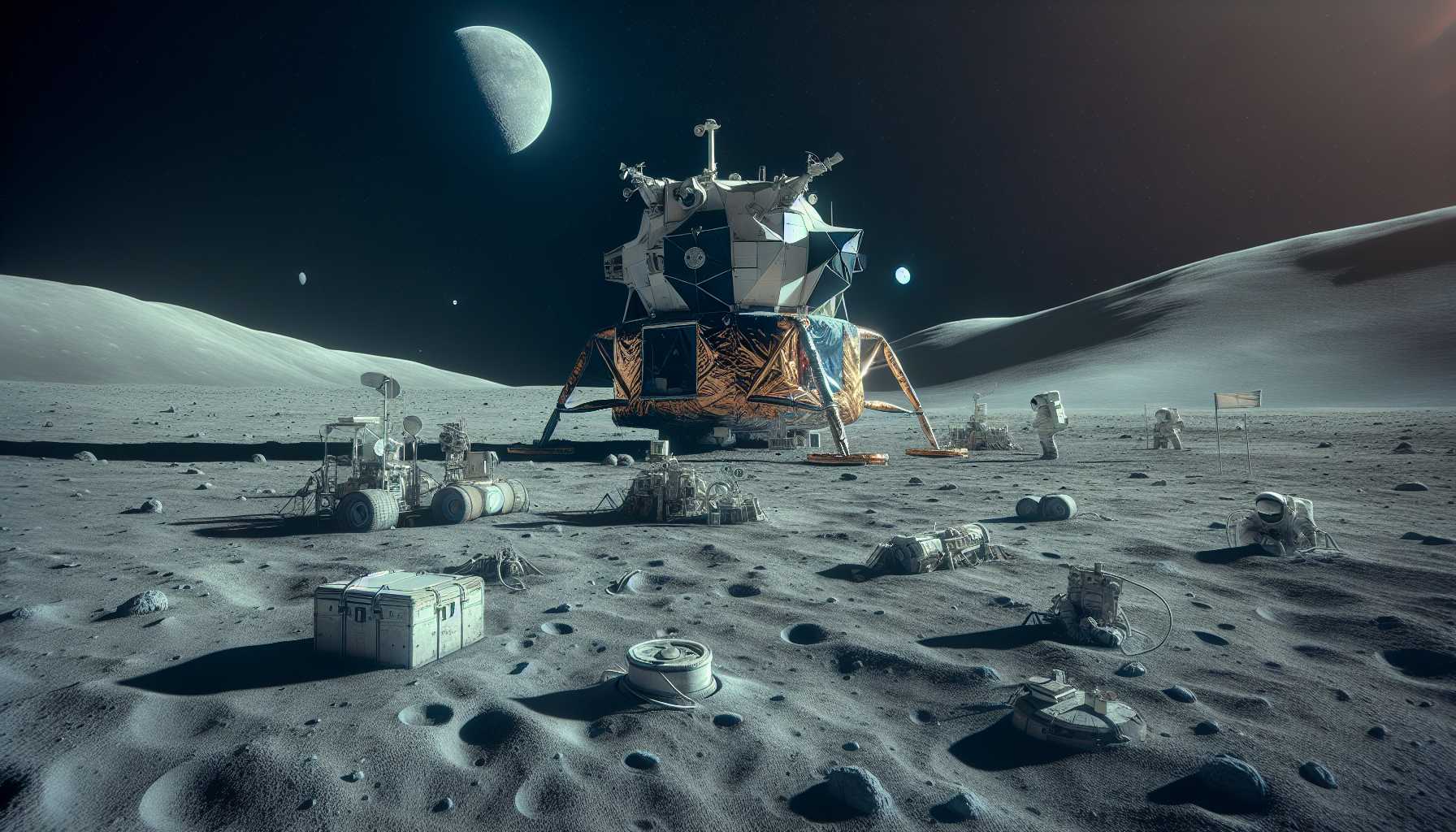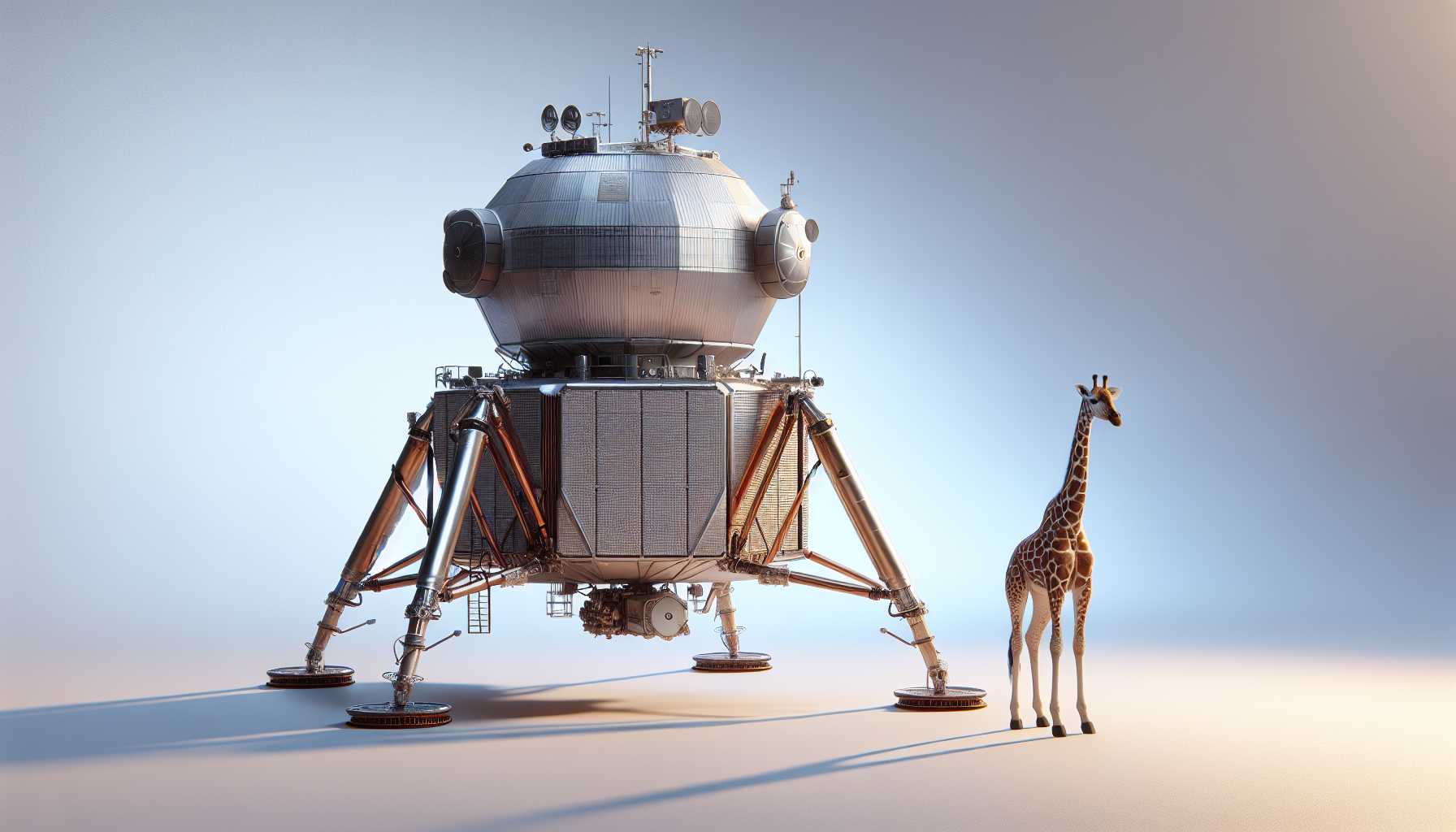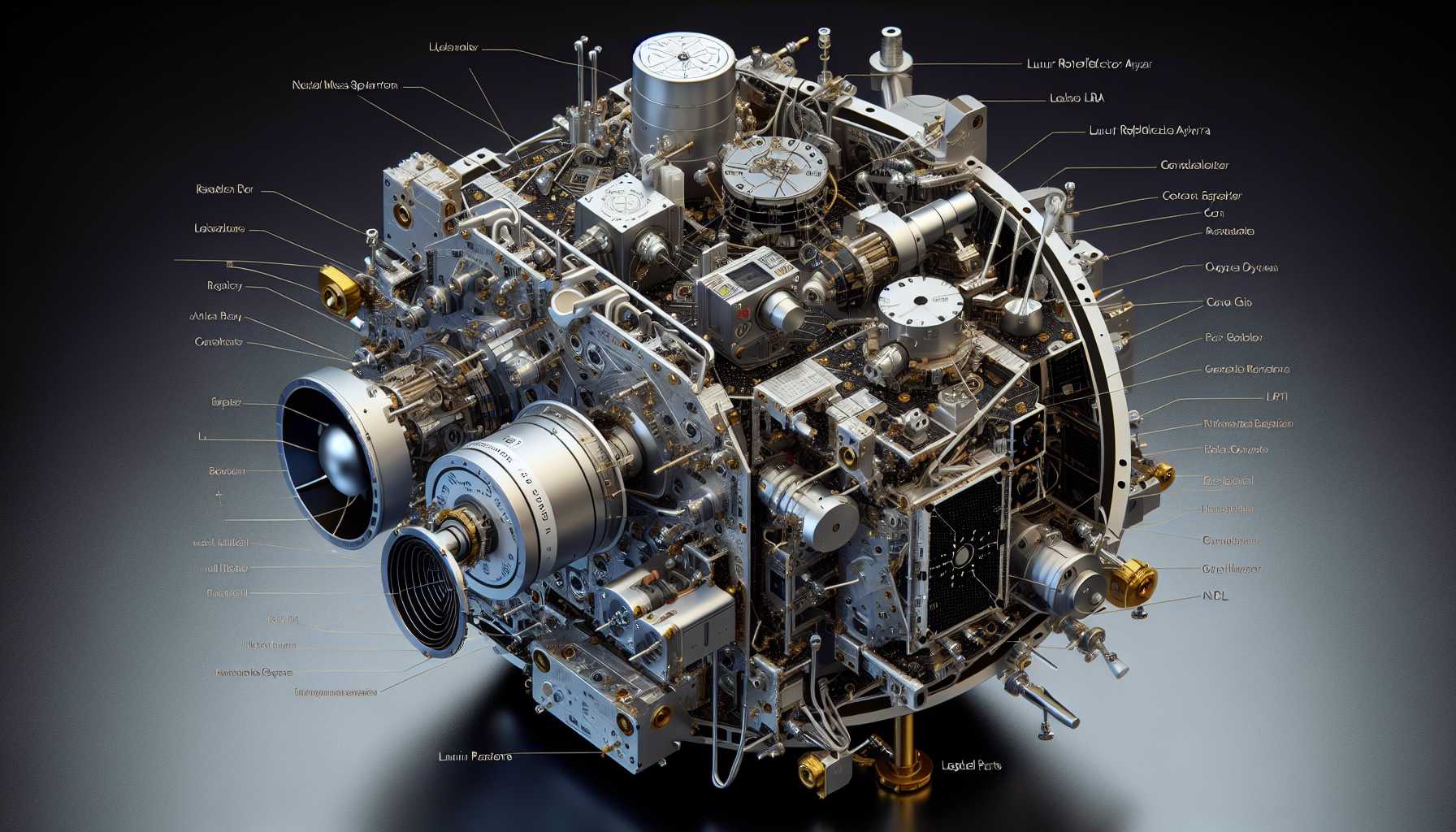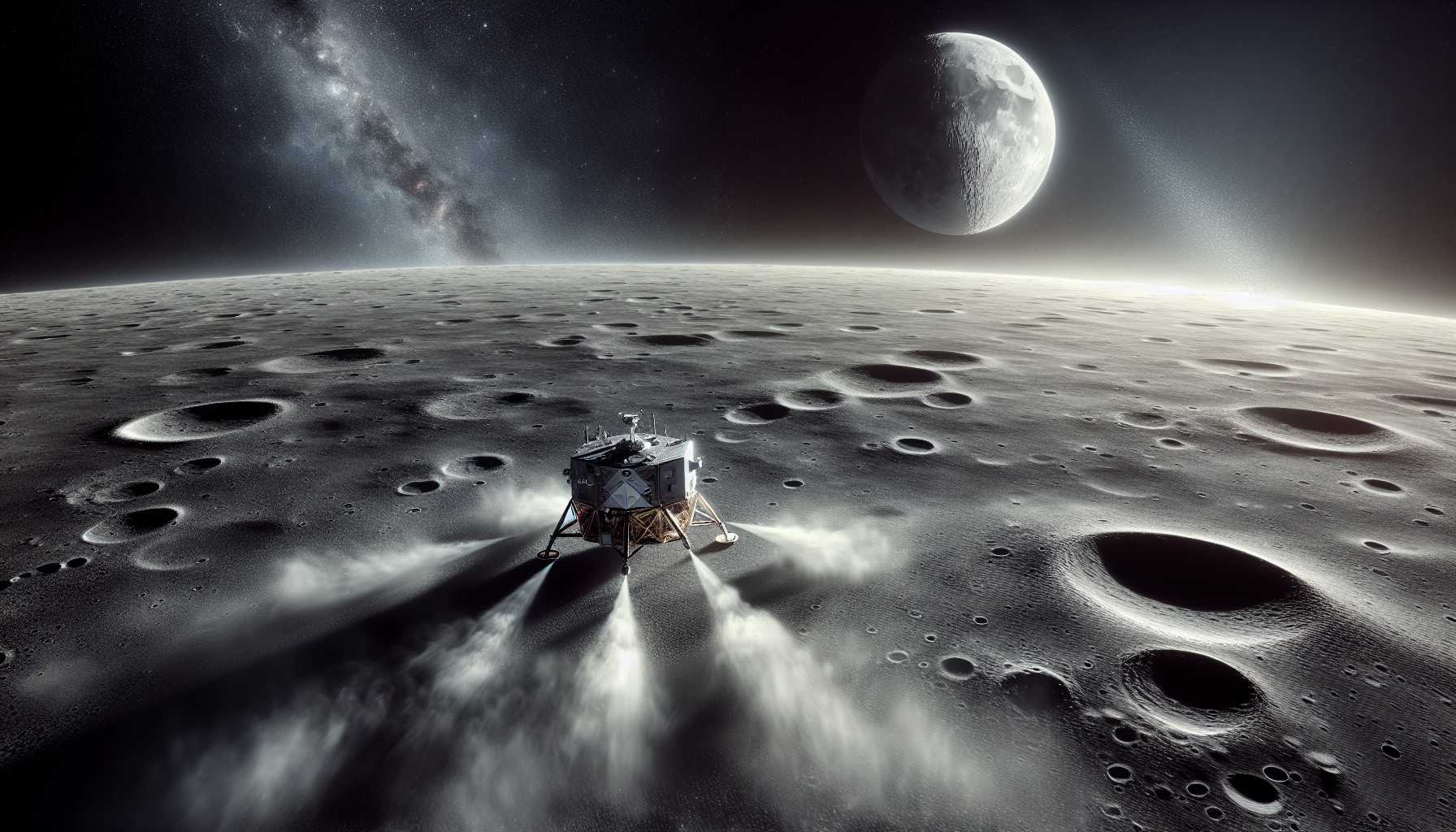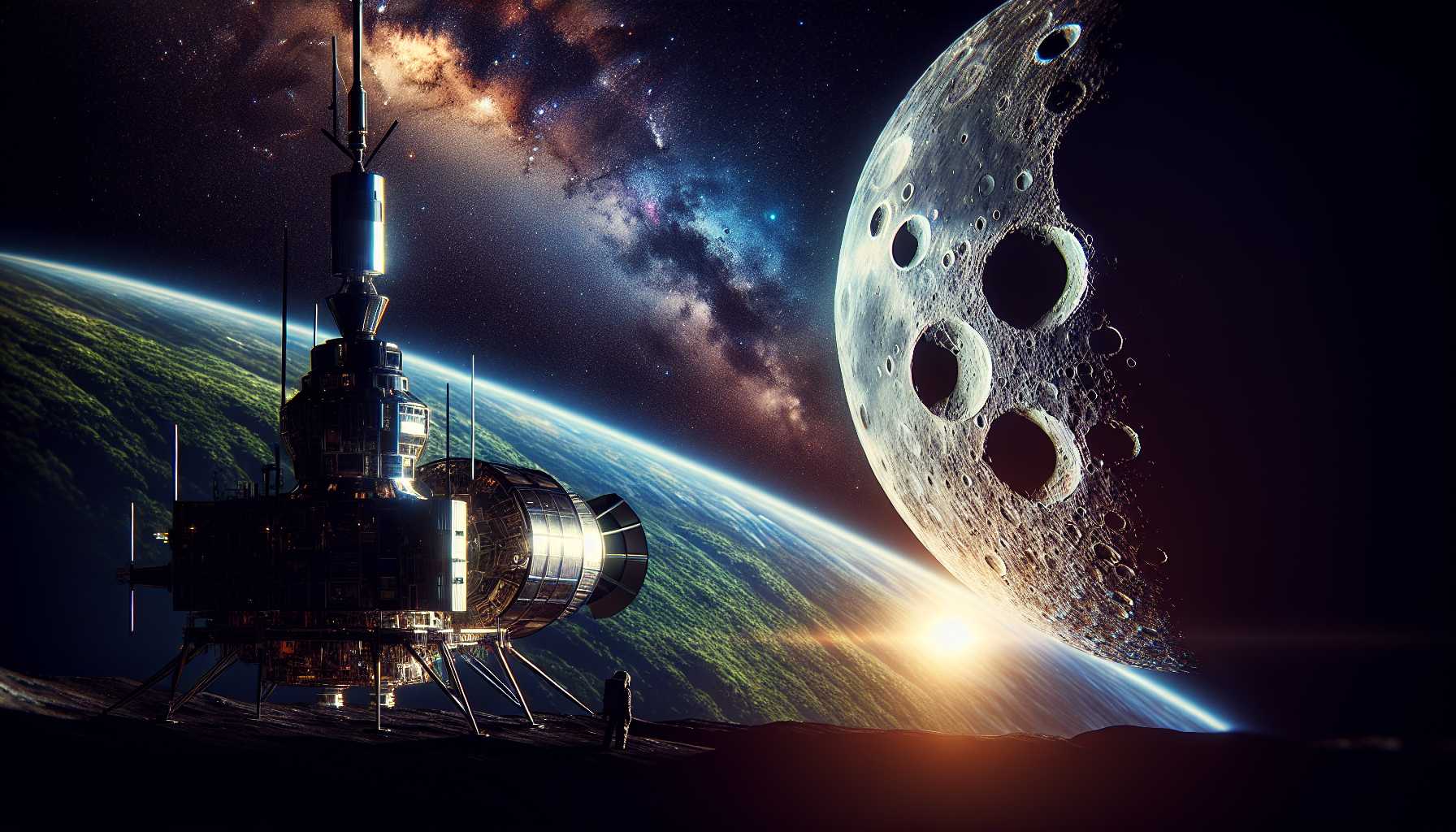In the silent expanse of space, a new chapter of lunar exploration is about to be etched by an intrepid spacefarer from Houston. Intuitive Machines is on the brink of attempting what could be a historical touchdown on the crater-riddled lunar surface. This fledgling company’s craft, aptly named Odysseus, is prepping for a journey that might end with the first-ever commercial soft landing on the moon. As a tech enthusiast and advocate for the boundless possibilities of space exploration, I’m tantalized by the enormity of this endeavor and the multitude of technical marvels that accompany it.
Following in Peregrine’s Wake: The Rise of Commercial Lunar Landings
Not long ago, Astrobotic’s Peregrine faltered, never reaching its lunar destination due to a propellant leak, an anti-climax that resonates in the high-stakes realm of space missions. Intuitive Machines’ IM-1 mission is knocking on history’s door, poised to land later this February. I’ve been following these developments avidly, knowing each success and setback moves us closer to our celestial neighbor. The destination? The intriguing Malapert A crater near the lunar south pole, with a launch from a trusty SpaceX Falcon 9 rocket. The launch window opens with the midnight oil still burning at 12:57 AM ET on a February Wednesday. As a tech investor, this collaboration echoes a symphony of innovation and shared vision – it’s a Silicon Valley approach to space exploration that pulses with potential.
The Nova-C Craft: A Giraffe-Sized Leap for Mankind
Intuitive Machines’ Nova-C class lander, of which Odysseus is a flagship, impresses not just with ambition but with stature, rivaling a giraffe at 14 feet tall. Its goal is to transport approximately 280 pounds of scientific expertise and commercial ambition to the moon. The mission’s duration may be brief, yet its implications are vast, particularly for NASA’s Artemis missions, which eye our lunar companion with newfound interest. There’s water ice at the south pole, a veritable gold mine for sustainment and fuel production on future manned missions. The solar-powered Odysseus will operate in peak lunar day conditions for about a week, ensuring uninterrupted data gathering before succumbing to the frigid lunar night. It’s a fleeting timeframe, but one that I believe will be invaluable in illuminating lunar mysteries and refining technological prowess for subsequent missions.
NASA’s Payload: The Instruments That Will Outlast a Lunar Night
NASA’s $77 million handshake with Intuitive Machines is a landmark of faith and foresight, embedding six NASA instruments aboard Odysseus. Notable among these is the Laser Retroreflector Array (LRA) – a beacon for future explorers – and innovative navigational aids such as the Navigation Doppler LIDAR (NDL) and the Lunar Node 1 Navigation Demonstrator (LN-1). These instruments are torchbearers, heralding advancements in precision descent, autonomous navigation, and communication. It’s a menagerie of high-tech sorcery that dances on the cusp of what’s possible, pushing the envelope of our cosmic reach.
Unveiling Lunar Dust Secrets and Solar System Snapshots
The cornucopia of instruments on Odysseus isn’t limited to GPS-like precision; it extends to imaging the moon’s dusty theatrics upon landing (Stereo Cameras for Lunar Plume-Surface Studies – SCALPSS) and probing the esoteric interactions of lunar surface radio waves (ROLSES). These are the tools that will unfurl the curtain on the secrets of space weather and lunar surface dynamics, contributing to our understanding of planetary science and safe landing technologies. Furthermore, we’re on the cusp of seeing the Milky Way as never before, with the Canadian dual-camera system ILO-X sowing our cosmic curiosity, affording us wide and narrow field views of our galaxy – through lunar eyes.
Commercial Collaboration: Fashion, Education, and Art Go Lunar
Commercial entities are leveraging this moonshot as well, marrying the boundaries of industry with the final frontier. Columbia Sportswear has sewn its Apollo-themed material into the fabric of the spacecraft for thermal protection. Interestingly, a camera system designed by students at Embry-Riddle Aeronautical University, EagleCam, aims to capture the moon landing from a dramatic third-person perspective, featuring an experimental dust repellent system. Art also ascends to celestial heights with Jeff Koons’ sculptures and their NFT twins creating an interplanetary art exchange. This is a telling symptom of our times: when culture, commerce, and exploration become inexorably linked. It’s all part of humanity’s narrative stitching itself into the fabric of space exploration.
Data Storage Beyond the Clouds: From Earthly Disaster Recovery to Lunar Vaults
If that weren’t enough, innovative data storage techniques are also making the leap. Lonestar’s Disaster Recovery as a Service (DRaaS) plans to safeguard data on the lander, creating a new definition of ‘off-site backup’. It begs the question: Can the moon become the ultimate data fortress for humanity’s digital heritage?
Final Thoughts: The Weight of Success on Odysseus’s Shoulders
As I look towards Odysseus’ pending journey, it’s impossible to ignore the mission’s significance. The craft is stacked with aspirations larger than its physical form. It’s more than a giraffe-sized mechanical marvel—it’s the embodiment of human curiosity and technological tenacity. Sure, the stakes are high following Astrobotic’s Peregrine and JAXA’s SLIM experiences. But this is the nature of space exploration: a continued mosaic of triumphs and lessons learned under star-filled theatres where the audience – us Earthlings – wait in bated breath for the next act to unfold. Odysseus’ mission is an overture to a lunar resurgence, and Intuitive Machines, with their clutch of booked flights and payloads, has the tech world’s rapt attention. Houston, the stage is set; will Odysseus craft its own Homeric epic, or will this mission be yet another stepping stone in humanities relentless march to the cosmos? Time will tell, and we are here for it, watching the night sky with anticipation, cheering for the underdog in the grandest race of all.

